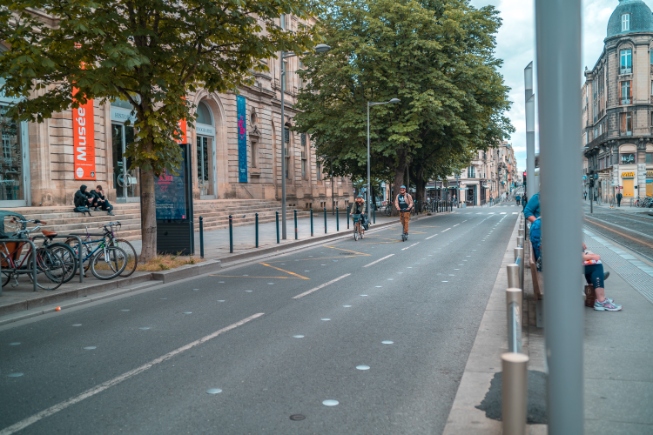
The Museum of Aquitaine: immerse yourself in the history of the region
The Museum of Aquitaine: a gateway to history. This museum, created in 1962 by Georges Henri Rivière, seeks to comprehensively show the history of the Aquitaine region. Through the union of different collections and museums of the city, the Museum of Aquitaine becomes a window to the past.
Here visitors can explore from prehistory to the present day, with temporary exhibitions, lectures and educational activities. In addition, Bordeaux’s monumental gates are part of the city’s valuable historical heritage. Immerse yourself in the history of the region with a Free Walking Tour of Bordeaux.
The Museum of Aquitaine: origin and history
The Museum of Aquitaine has a rich and fascinating history. The museum’s history dates back to its creation in 1962. With the aim of presenting a comprehensive overview of the history of the Aquitaine region, this museum was founded by Georges Henri Rivière. Initially, it shared a building with the Bordeaux Museum of Fine Arts, but later, in the 1970s, it was moved to a former building of the city’s Faculty of Sciences and Letters.
Creation of the Museum of Aquitaine in 1962
In 1962, Georges Henri Rivière decided to give life to the Museum of Aquitaine, with the purpose of offering a complete vision of the history of the region. His main objective was to consolidate the collections and histories of different Bordeaux museums in a single space dedicated to the culture and heritage of Aquitaine.
Relocation to the Faculty of Sciences and Letters of Bordeaux in the 1970s
In the 1970s, the Museum of Aquitaine underwent a significant change when it was moved to a former building of the Faculty of Sciences and Letters in Bordeaux. This change of location allowed the museum to expand and provide a more suitable space for the display of collections and the organization of cultural activities related to the history of Bordeaux.
Acquisitions and renovation policy in the 1980s
In the 1980s, during the renovation of the building that housed the Museum of Aquitaine, an acquisitions policy focused on further enriching the museum’s collections was implemented. This meant the incorporation of new historical pieces and artifacts, thus strengthening the presentation and representation of Aquitaine’s history.
Opening to the public in 1987
Finally, in 1987, the Museum of Aquitaine opened its doors to the public in its new location. Since then, it has become one of the region’s leading history museums and has provided visitors with the opportunity to explore and understand Aquitaine’s rich history through its various exhibitions, lectures, screenings, concerts and workshops.
The Museum of Aquitaine: a fusion of collections and museums
The Museum of Aquitaine in Bordeaux is the result of the union of various collections and museums in the city, offering a comprehensive overview of the history of the region. Through centuries of cultural development, the city of Bordeaux has been home to a variety of museums that played a key role in the formation of what we now know as the Museum of Aquitaine.
History of museums in Bordeaux since 1594
The history of museums in Bordeaux dates back to 1594, when a Roman altar was displayed in the City Hall. This event marked the beginning of a series of cultural initiatives that led to the creation of different museums in the city throughout the 19th century.
Creation of several museums in the 19th century
During the 19th century, several different museums were established in Bordeaux to meet the cultural needs of the population. Of particular note were the Museum of Arms and Ancient Objects, which housed a collection of historical arms and antique objects, and the Lapidary Museum, which was dedicated to the exhibition of lapidary inscriptions and sculptures.
Private museums and donations to the City Hall
In addition to public museums, Bordeaux also had private museums, such as the Bonie Museum, which was donated to the City Hall in 1894. This museum housed a rich collection of art and historical objects, further enriching the cultural heritage of the city. Another example is the Museum of Old Bordeaux, founded in 1908 and dedicated to preserving the memory of the city and its evolution over the centuries.
Reorganization of the museums in the 1950s and formation of the Museum of Aquitaine
In the 1950s, a reorganization of the museums in Bordeaux was carried out with the aim of providing a more comprehensive presentation of the history and art of the region. In this context, it was decided to merge the collections of different museums to form the Museum of Aquitaine, which would offer a global and complete vision of the history of Aquitaine.
The Museum of Aquitaine, since its opening in 1987, has established itself as one of the leading history museums in the province. Its fusion of collections and museums allows visitors to explore the history and culture of the region in a single space, offering an enriching experience that spans from prehistory to the present day.
The Porte d’Aquitaine: a symbol in the Bordeaux’s Victoire Square
The Porte d’Aquitaine is an imposing 16-meter-high obelisk that stands majestically on Bordeaux’s central Victoire Square. This iconic structure, designed by the prominent sculptor Ivan Theimer, is one of the main symbols of the city and a must stop for visitors on a free tour of Bordeaux.
Features and decorations of the gate
The Aquitaine Gate is composed of six blocks of red marble arranged in the shape of an obelisk. Its vibrant color further enhances its beauty and presence in the square. At the base of the obelisk, two bronze turtles decorated with grapes can be seen, symbolizing the importance of wine in the Aquitaine region. These wine representations underline the rich wine tradition of Bordeaux and its close relationship with the local culture and history.
Importance of wine in the region and its representation at the Porte d’Aquitaine
Wine is central to the Aquitaine region and has played a key role in its historical and economic development. The representation of turtles with grapes on the Porte d’Aquitaine symbolizes the importance of wine in the culture and identity of Bordeaux. This close relationship with viticulture is reflected in much of the region’s history, making wine a distinctive symbol of Aquitaine and an essential element in its cultural heritage.
The Museum of Aquitaine: a journey through history
The Museum of Aquitaine is a fascinating journey through the history of the region, spanning from prehistory to the present day. Its extensive historical coverage allows visitors to immerse themselves in different eras and discover the evolution of the region over the centuries.
Temporary exhibitions, conferences and complementary activities
In addition to its permanent collection, the Museum of Aquitaine offers temporary exhibitions that explore specific themes and present major works of art and historical objects. These exhibitions allow visitors to delve deeper into particular aspects of the region’s history and discover new approaches and perspectives. In addition, the museum organizes lectures given by experts in different disciplines, providing a unique opportunity to learn and discuss relevant historical and cultural topics.
As for complementary activities, one of the curiosities of Bordeaux is that the Museum of Aquitaine offers history-related film screenings, early music concerts and educational workshops for all ages. These activities seek to enrich the visitors’ experience and foster a greater knowledge and appreciation of the region’s history.
Tomb of Michel de Montaigne, 16th-century writer and philosopher
One of the treasures of the Museum of Aquitaine is the tomb of Michel de Montaigne, an illustrious 16th century writer and philosopher. Montaigne, considered one of the fathers of the modern essay, rests in the museum, giving visitors the opportunity to pay tribute to one of the most influential thinkers in the history of literature.



